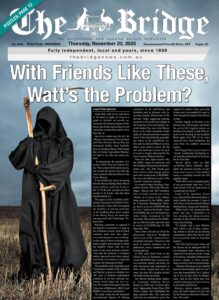
Britain’s labour market is experiencing a significant slowdown as job losses increase and hiring intentions reach record lows. In July 2023, the number of employees on company payrolls fell, with employers cutting headcount by 8,000. This decline follows a drop of 164,000 workers since the general election in July 2022. The official unemployment rate remains at 4.7%, the highest level since 2021, raising concerns about the outlook for the economy.
The recent data presents a challenging scenario for Chancellor Rachel Reeves, who has prioritized reviving the economy since taking office. The decline in job numbers, combined with a slowdown in annual wage growth, underscores the difficulties ahead. Wage growth for the three months leading to June 2023 showed annual growth in real terms at 1.5% for regular pay and 1.1% for total pay, which includes bonuses. As inflation resurges, workers may find their purchasing power eroded further, with predictions suggesting inflation could peak at 4% by September.
Economic Pressures and Sector Impact
Economists attribute the current labour market conditions to two main factors: a bleak economic outlook and the Chancellor’s decision to raise employer national insurance contributions by £25 billion, which was announced in her first autumn budget in October 2022 and implemented in April 2023. Job losses have been most pronounced in the retail and hospitality sectors, which are particularly vulnerable due to their reliance on part-time and flexible contracts.
The uncertainty surrounding the UK economy has contributed to a decline in hiring intentions. Employers are grappling with various pressures, including the ongoing impacts of Donald Trump’s trade policies, sluggish consumer spending, persistent inflation, and high interest rates. In response to these challenges, the Bank of England recently reduced borrowing costs to 4%, although officials warned that renewed inflationary pressures could delay any further cuts.
Despite the rising job losses, some analysts view the situation with caution. The number of HR1 advanced redundancy notifications, which companies must submit to the government before making significant staff cuts, remained relatively low in July. This suggests that while the labour market is cooling, the decline is gradual, rather than a sharp collapse as predicted by some employer groups.
Future Outlook
Looking ahead, the pace of economic change could influence the Bank of England’s monetary policy decisions. The central bank’s agents anticipate that average pay growth will slow to approximately 3.75% by the end of the year, which may compound the financial pressures facing households. Analysts remain puzzled by the resilience of average earnings growth amid economic uncertainty, but they caution that the crossover point where inflation overtakes average annual pay is approaching.
For Chancellor Reeves, the upcoming autumn budget will require careful calibration to mitigate further negative impacts on workers. The current trends highlight the need for targeted interventions to support the labour market and ensure a sustainable recovery for the UK economy. The situation remains dynamic, and stakeholders will be closely monitoring developments in the coming months as they navigate these challenging economic conditions.






